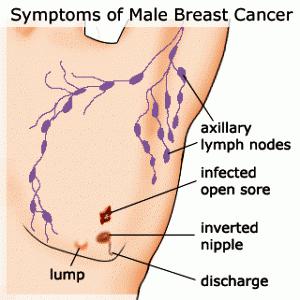 While the incidence of breast cancer is low in men, a recent national study shows their survival rates lags behind women.
While the incidence of breast cancer is low in men, a recent national study shows their survival rates lags behind women.
Jon Greif, D.O. of Alta Bates Summit Medical Center in Oakland, Calif., reported on the new study at a press briefing in conjunction with the American Society of Breast Surgeons meeting in Phoenix. He and his colleagues found that while the five-year overall survival rates among women is 83%, it is 74% for men.
Briefing moderator, Deanna J. Attai, MD, of the Center for Breast Care in Burbank, Calif. said, “Even though we think of male breast cancer as a rare disease, we all see at least one or two cases a year in our practice.”
The study used the world’s largest breast cancer data bank, focusing on the 13,457 cases of male breast cancer diagnosed from 1998 through 2007. Findings showed that men with breast cancer were more likely to have disease characteristics associated with poorer outcomes, including:
-
Older age at diagnosis (mean 63 versus 59 in women)
-
Larger tumors
-
Higher grade tumors
-
Higher lymph node metastasis rates
-
Men were more likely than women to have hormone receptor-positive tumors (88% versus 78% estrogen receptor positive and 77% versus 67% progesterone receptor positive).
While men accounted for just 0.9% of breast cancer cases in the analysis of the National Cancer Data Base, Greif suggested more needs to be done for them.”If the example of female breast cancer is any indication, simply raising public awareness should boost early detection and thus drive down mortality from the disease in men,” he told reporters.
“Treating men according to standard guidelines for women and screening those with known breast cancer risk mutations or a history of breast cancer might also help,” he added.
For higher risk men, he recommended not only mammography and yearly clinical breast exam but also monthly breast self-exams after age 40. “He should periodically take a look at his breast, make sure he doesn’t see anything out of the ordinary — a lump, a distortion, a discharge, a crustiness, an ulceration, that sort of thing — and then he should just feel the area for lumps,” Greif said at the briefing. “There’s very little to the exam. It shouldn’t take more than a minute.”
Greif cautioned that large databases can unearth statistically significant findings that aren’t necessarily clinically significant and noted possible under reporting of treatment for male breast cancer.
Another limitation, according to Greif, was the older age of the men at diagnosis. Greif told reporters,”In the absence of disease-specific mortality data, we do not know whether the deaths were due to breast cancer or other conditions.”
Source reference: Greif J, et al “Gender differences in breast cancer: Analysis of 13,000 male breast cancers from the National Cancer Data Base” ASBrS 2012; Abstract 104.
 While the incidence of breast cancer is low in men, a recent national study shows their survival rates lags behind women.
While the incidence of breast cancer is low in men, a recent national study shows their survival rates lags behind women.
